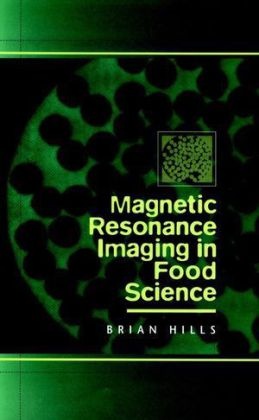Read more
Informationen zum Autor BRIAN HILLS, PhD, is head of the molecular structure and dynamics group at the Institute of Food Research, Norwich Research Park, Colney, Norwich, United Kingdom. Klappentext "Hills is probably the best person I can think of to write this book. He has the deepest background combined with considerable experience in solving problems with food." -R. G. Bryant, University of Virginia.Food scientists have many excellent tools at their disposal with which to study food at both the micro- and macrostructural levels. But, when it comes to analyzing dynamic structural changes in food during processing and storage, none can compare with magnetic resonance imaging (MRI). Still a very young approach, MRI food imaging has contributed greatly to recent advances in food science, and promises to yield much more valuable information in the years ahead. Written by a leading pioneer in the field, Magnetic Resonance Imaging in Food Science covers the latest in MRI food imaging theory and practice.Written primarily for food scientists and engineers, the book offers a practical, unified approach to the subject. Material is organized in three main parts corresponding to the distances of scale probed by MRI studies-namely, the macroscopic, microscopic, and macromolecular. Throughout, the emphasis is on ways in which studies of food undergoing processes can be modeled using the equations of heat, mass, and momentum transport, and how those models can be used in process design optimization programs.Magnetic Resonance Imaging in Food Science provides researchers with the most up-to-date, detailed coverage of:* Traditional and cutting-edge MRI food imaging techniques and technologies, including STRAFI, gradient-echo imaging, and functional imaging* Whole plant functional imaging, flow imaging and rheology, and other specialized MRI applications* The roles of food microstructure and molecular relaxation mechanisms in controlling moisture and heat transport* Techniques for modeling structural changes during food processing.Magnetic Resonance Imaging in Food Science is an important working resource for all researchers engaged in the never-ending struggle to produce safer, higher-quality foods more efficiently. Zusammenfassung Magnetic Resonance Imaging wird erst seit relativ kurzer Zeit auch zur Analytik von Nahrungsmitteln angewendet. Die Technik ist hervorragend geeignet zur Verfolgung von Vorgängen wie Trocken, Gefrieren, Backen und Gefriertrocknen und kann dabei helfen, die Qualität von Lebensmitteln entscheidend zu verbessern. Diese aktuellste und ausführlichste momentan erhältliche Referenz ist ein wertvolles Hilfsmittel für Forschungsalltag und Lehre. Inhaltsverzeichnis MACROSCOPIC DISTANCE SCALE. A Résumé of MRI Methodology. MRI and Food Processing: Mapping Mass Transport and Phase Behavior. MRI and Food Processing: Mapping Temperature and Quality. Flow Imaging and Food Rheology. Solid-Imaging Techniques. On-line MRI for Process Control and Quality Assurance. Whole-Plant Functional Imaging. Unconventional MRI Techniques. MICROSCOPIC DISTANCE SCALE. Microimaging and NMR Microscopy. Microstructure and Relaxometry. Probing Microstructure with Diffusion. MOLECULAR DISTANCE SCALE. Molecular Origins of Relaxation Contrast. Molecular Factors Influencing the Diffusion and Transfer of Water Magnetization. References. Index....
List of contents
MACROSCOPIC DISTANCE SCALE.
A Résumé of MRI Methodology.
MRI and Food Processing: Mapping Mass Transport and Phase Behavior.
MRI and Food Processing: Mapping Temperature and Quality.
Flow Imaging and Food Rheology.
Solid-Imaging Techniques.
On-line MRI for Process Control and Quality Assurance.
Whole-Plant Functional Imaging.
Unconventional MRI Techniques.
MICROSCOPIC DISTANCE SCALE.
Microimaging and NMR Microscopy.
Microstructure and Relaxometry.
Probing Microstructure with Diffusion.
MOLECULAR DISTANCE SCALE.
Molecular Origins of Relaxation Contrast.
Molecular Factors Influencing the Diffusion and Transfer of Water Magnetization.
References.
Index.

